
About Us
The Gobi-Steppe Neolithic started in 2013 with the partnership of Odsuren, Bukhchuluun, Lisa, and Chinzorig. Asa joined us in 2017. We share a mutual interest in Gobi Desert archaeology, the wish to understand how humans in the past lived, and the desire to highlight the global importance of Mongolian archaeology. Since 2013, we have visited, surveyed, mapped, and excavated Palaeolithic, Neolithic, and Bronze Age archaeological sites in eastern Mongolia, with a primary interest in the Neolithic and the Bronze Age transition. We have welcomed many new collaborators who have added technical expertise and creative insight, and remain dedicated both to providing research opportunities for new researchers and collaborating with some of the top archaeologists in the field.
Theme 1/
Climate Change
in the Past
Everyone talks about how our climate is getting warmer. And it is! Today, part of the reason for climate change is because humans (especially in cities) have been putting so many chemicals into the air and water, but we also know that the natural climate change is constant. Even during the Ice Age there were warm and cold periods and sometimes it was even warmer and wetter than it is today. Humans need to change with their environment if they want to survive and thrive. Archaeology tells us a lot both about how people did this and about the climates they lived in. After about 11,500 years ago, most of the world was warmer and wetter than it is today, and the choices our ancestors made forever changed the way that people lived. Deserts are great places to study these changes because just a little more water can make those environments look and feel very different. We are studying how people lived 8500-3000 years ago in the Gobi Desert in order to understand what climate change meant for people in the past.
Theme 1/
Climate Change in the Past
Everyone talks about how our climate is getting warmer. And it is! Today, part of the reason for climate change is because humans (especially in cities) have been putting so many chemicals into the air and water, but we also know that the natural climate change is constant. Even during the Ice Age there were warm and cold periods and sometimes it was even warmer and wetter than it is today.
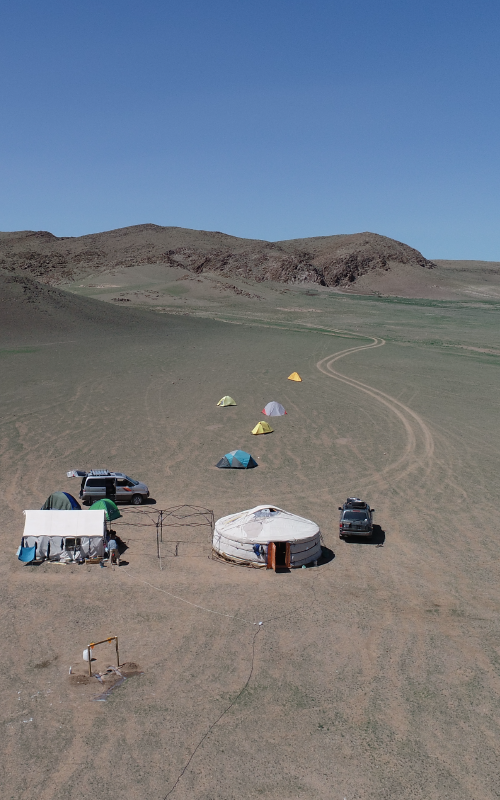
Theme 2/
Expanding Frontier
Most of what you have been taught in school about how humans started farming and living in cities is based on archaeological research in the Mediterranean and Europe, but there is a much richer story waiting to be told.
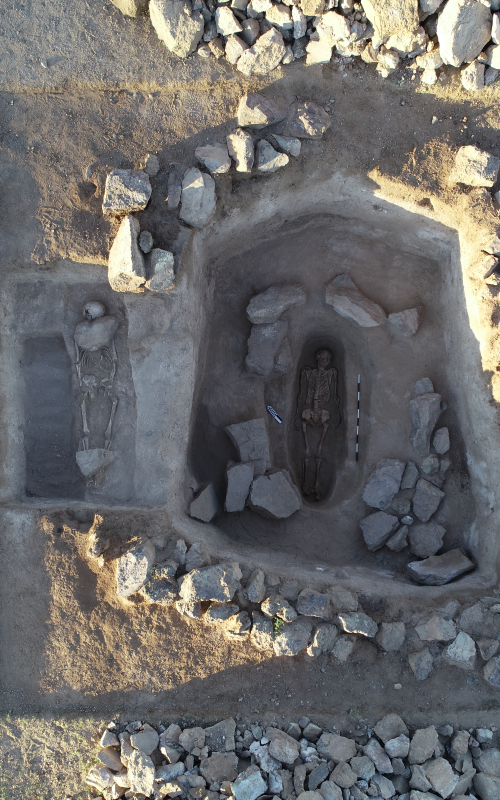
Theme 3/
Human-Animal Relationships
Humans and other animals evolved together. We are and always have been interdependent in that we rely on one another to live. This may be why humans have such a natural empathy for other animals.
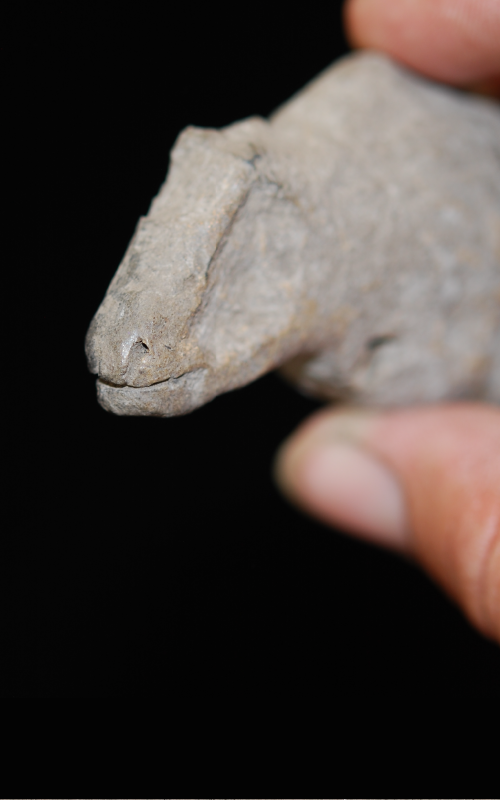
Theme 4/
Megafaunal Extinctions
Have you ever heard people talk about how climate change is causing the “third mass extinction event?” If so, they probably mean that dinosaurs (Cretaceous-Tertiary Mass Extinction) were the first, and that mammoths and their friends (“megafauna”) were the second (but actually dinosaurs were the fifth and most recent mass extinction event and you can learn about the others on Wikipedia).
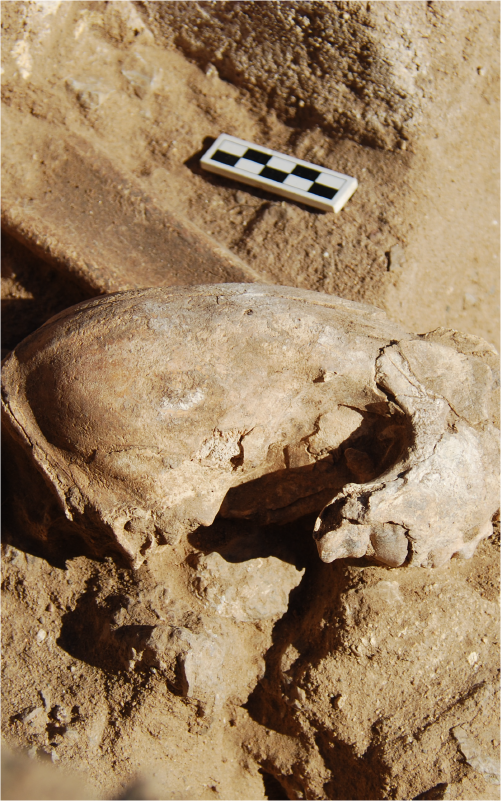
Theme 2/
Expanding Frontier
Most of what you have been taught in school about how humans started farming and living in cities is based on archaeological research in the Mediterranean and Europe, but there is a much richer story waiting to be told. We believe that Mongolia has as much – well, even maybe more – to tell us about how most people lived in the past, and how that changed over time. Places like Mongolia are usually seen as being frontier zones to big empires – if people are interested in East Asian Archaeology, they might think of China first – but our research on Bronze Age Mongolia turns the idea of the “frontier” upside down, showing that 1) there is more to a big Empire than the biggest city with the biggest palace, and 2) what goes on outside the big palaces is closer to the story of shared humanity, even if it doesn’t have lots of fancy gold artifacts.
Theme 3/
Human-Animal Relationships
Humans and other animals evolved together. We are and always have been interdependent in that we rely on one another to live. This may be why humans have such a natural empathy for other animals. The history of our relationships with them is dynamic and complex. Some animals have come to live so closely with humans that it changed the way they look and behave. These animals are domesticated and no longer wild. But, the difference between wild and domesticated is not as clear as you might think. This is even more true for the distant past, when most of the animals that humans interacted with were wild. Around 7500 years ago in the far eastern steppes of Mongolia, humans and wild cattle had a unique relationship – one that has the power to help us understand human-animal relationships in a new way.
Theme 4/
Megafaunal Extinctions
Have you ever heard people talk about how climate change is causing the “third mass extinction event?” If so, they probably mean that dinosaurs (Cretaceous-Tertiary Mass Extinction) were the first, and that mammoths and their friends (“megafauna”) were the second (but actually dinosaurs were the fifth and most recent mass extinction event and you can learn about the others on Wikipedia). The reasons for the widespread (but not “mass”) extinction of really large grassland animals like mammoth, woolly rhinoceros, and giant elk is a big question for scientists because it happened around the same time that humans spread all over the world. The big debate: did humans hunt them to extinction? Or was it climate change? Since 2007, we have been using ostriches to studying megafaunal extinction in East Asia. Believe it or not, ostriches used to live all the way from northern India to Siberia, Mongolia and China, and people have been collecting and using their eggshell for tens of thousands of years.
Theme 5/
Northern Peoples
We sometimes forget that people who live in northern climates understand adaptation like no one else. They must adapt to climate change several times a year and even normal seasonal climate change is often unpredictable from year to year.
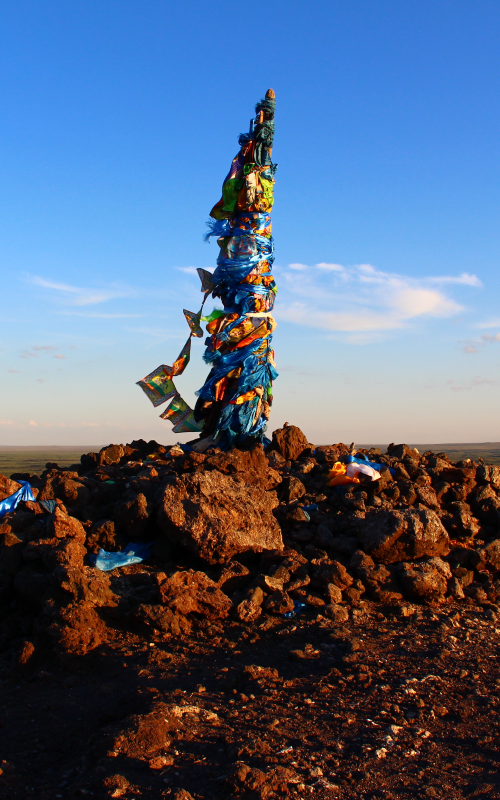
Theme 5/
Northern Peoples
We sometimes forget that people who live in northern climates understand adaptation like no one else. They must adapt to climate change several times a year and even normal seasonal climate change is often unpredictable from year to year. We often talk about the role of farming in the story of humanity, but what is amazing about northern peoples is that they were able to continuously adapt to major climate changes and seasonal variation without farming. Infact, many northern peoples have made the conscious choice to reject farming, or only to adopt bits and pieces of that lifestyle, until neighbouring nations forced them to change (often through colonization). You may have been taught in school that the story of mankind is the story of civilization, but we believe that the story of mankind is the story of hunter-gatherers… and that there are many hunter-gatherer stories to tell.
